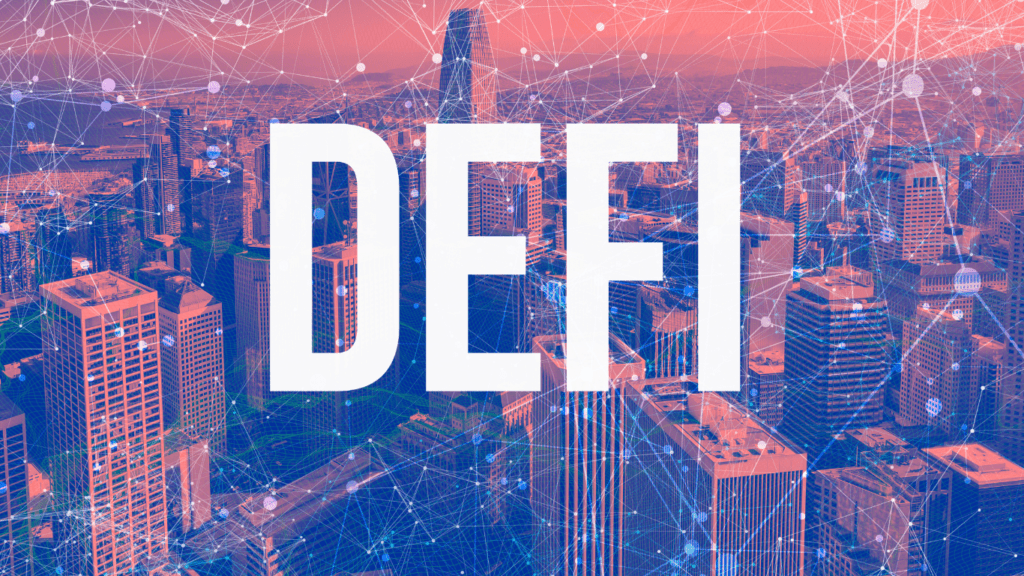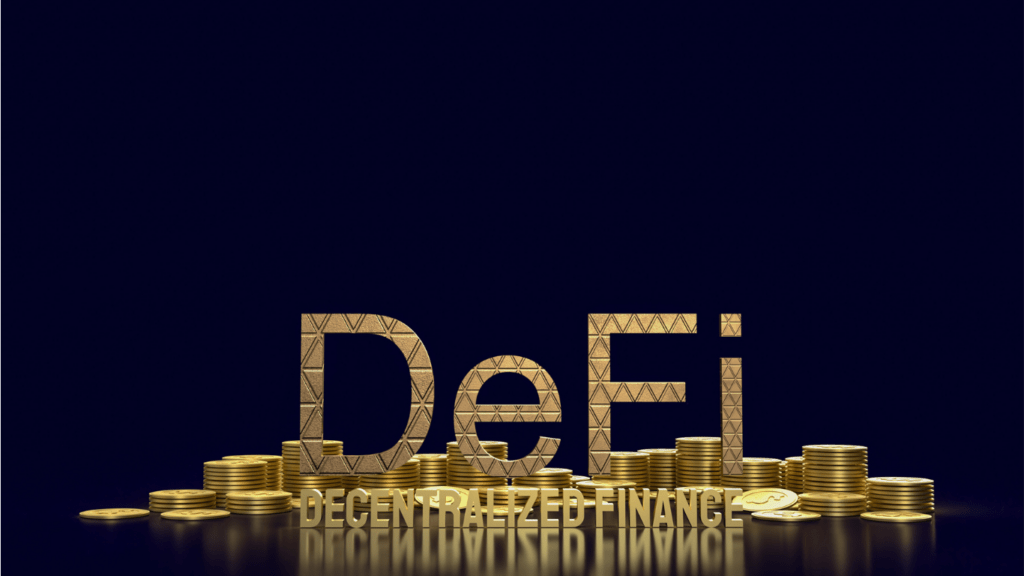The world of decentralized finance (DeFi) is buzzing again, and I can’t help but notice how it’s capturing attention amid shifting market dynamics. After a period of uncertainty, DeFi platforms are making a strong comeback, drawing in users and investors alike with innovative solutions and promising opportunities. It’s fascinating to see how these platforms are reshaping the financial landscape.
Understanding DeFi Platforms
DeFi platforms operate as decentralized financial systems, offering users alternatives to traditional banking and investment services. They leverage blockchain technology for greater transparency and user control.
What Are DeFi Platforms?
Decentralized finance (DeFi) platforms use blockchain networks, typically Ethereum, to provide peer-to-peer financial services. These services range from lending and borrowing to trading, yield farming, and insurance. Smart contracts power these platforms by automating transactions without third-party intermediaries. Examples include Uniswap, Aave, and Compound. Users retain control over their assets through personal wallets instead of relying on central entities.
Key Features of DeFi Platforms
- Decentralization: Transactions and services are distributed across nodes in a blockchain network, reducing reliance on centralized authorities.
- Transparency: Blockchains store transaction data openly, allowing users to verify activities in real time.
- Smart Contracts: Self-executing contracts handle agreements and payments automatically based on predefined conditions.
- Borderless Access: Users from any region can participate without restrictions, requiring only internet access and a crypto wallet.
- Interoperability: Many platforms integrate with others, enabling seamless asset transfers and diverse financial applications.
These features empower users with control, security, and accessibility unmatched by traditional finance systems.
Market Shifts Influencing DeFi Growth
DeFi platforms are experiencing renewed growth due to evolving economic conditions and shifting priorities among investors and users. Key market shifts are driving greater adoption of decentralized financial systems.
Recent Economic Trends
Global inflation rates have prompted individuals and institutions to seek alternative financial solutions. With traditional financial systems exposed to economic volatility, DeFi platforms offer a decentralized, transparent alternative. Rising interest in cryptocurrency as a hedge against fiat currency depreciation has further supported DeFi’s expansion.
Centralized financial failures, including major bankruptcies and liquidity crises over the past few years, have eroded trust in traditional systems. Users now prefer self-custody solutions and open ledgers, which DeFi platforms provide. Increased regulatory scrutiny of centralized platforms has also pushed market participants toward decentralized solutions, where protocols operate autonomously through smart contracts.
Factors Driving Renewed Interest in DeFi
Demand for transparency and control has driven investors to explore DeFi platforms. Blockchain technology ensures that every transaction is traceable, fostering trust in a system free from intermediaries. Users value the autonomy offered by DeFi, where self-managed wallets and smart contracts remove reliance on third parties.
High yield opportunities, such as staking and liquidity mining, are attracting users to DeFi protocols. These returns, often higher than those of traditional financial institutions, appeal to both retail users and institutional investors.
The growth of stablecoins, pegged to reserve assets like the US dollar, has enhanced DeFi accessibility for global users. Stablecoins address the volatility concerns associated with other cryptocurrencies, facilitating broader adoption of DeFi services.
Technological advancements, such as Layer 2 scaling solutions, are improving DeFi usability by reducing transaction fees and increasing speed. These innovations make DeFi platforms more competitive with traditional financial systems.
Leading DeFi Platforms Gaining Traction

Decentralized finance platforms continue to attract users by offering robust financial services and innovative solutions. I analyze prominent platforms and their key advancements driving user adoption.
Highlighting Top Platforms
Several leading DeFi platforms have experienced significant growth due to their reliable services and innovative features.
- Uniswap: This decentralized exchange facilitates seamless token trading without intermediaries. With its user-friendly design and automated market maker (AMM) mechanism, Uniswap processes billions of dollars in monthly trading volume, making it a top choice for traders.
- Aave: Known for its lending and borrowing services, Aave enables users to earn interest on deposits or obtain loans without credit checks. By offering features like flash loans and multi-collateral options, it remains a leader in decentralized lending.
- Curve Finance: Curve optimizes stablecoin trading with low fees and minimal slippage. Its focus on stablecoin liquidity has solidified its role in yield farming strategies.
- MakerDAO: As the backbone of the DAI stablecoin, MakerDAO provides stability in volatile markets through decentralized governance and collateralized debt positions (CDPs).
These platforms collectively showcase the diversity and utility of DeFi applications.
Innovations Spurring Platform Growth
Technical and structural innovations are transforming how platforms support users and improve accessibility.
- Layer 2 Scaling Solutions: Platforms integrating Layer 2 solutions, like Optimism or Arbitrum, reduce gas fees and increase transaction speeds. These upgrades enhance user experience and encourage adoption.
- Cross-Chain Interoperability: Advances enabling asset movement across blockchains, such as bridges and wrapped tokens, expand platform utility and broaden access to liquidity.
- Tokenomics Enhancements: Governance tokens like UNI (Uniswap) or AAVE (Aave) incentivize active user participation, ensuring community-driven growth and platform sustainability.
- Smart Contract Audits: Platforms investing in frequent audits mitigate risks by addressing vulnerabilities, building user trust and attracting institutions.
These innovations not only enhance platform functionality but also position DeFi as a viable alternative to traditional financial systems.
Challenges Faced by DeFi Platforms
DeFi platforms face significant obstacles that impact their adoption and growth. Key concerns include navigating regulatory landscapes and addressing security and scalability limitations.
Regulatory Concerns
Shifting regulations create complexities for DeFi platforms in various jurisdictions. Governments are placing stricter controls on decentralized systems to curb potential risks like money laundering and tax evasion. Compliance becomes difficult since DeFi platforms operate without intermediaries or centralized oversight. For instance, regulatory actions targeting stablecoins can affect liquidity for DeFi applications relying on these assets for transaction stability. Such uncertainty can deter institutional adoption and limit platform expansion.
Security and Scalability Issues
Security vulnerabilities challenge the credibility of DeFi platforms. Smart contracts, while innovative, are susceptible to exploitation through poorly written code or vulnerabilities. High-profile breaches like the $600 million Poly Network hack highlight risks to user funds. These incidents discourage user trust and adoption.
Scalability also hinders DeFi’s performance during peak demand. Many platforms rely on Ethereum’s network, where congestion leads to high transaction fees and slower processing times. Even with advancements like Layer 2 solutions, ensuring reliability under growing usage remains a challenge. Users often seek platforms offering lower costs and faster processing, making scalability improvements essential for competitiveness.


 Founder & Blockchain Visionary
Founder & Blockchain Visionary

